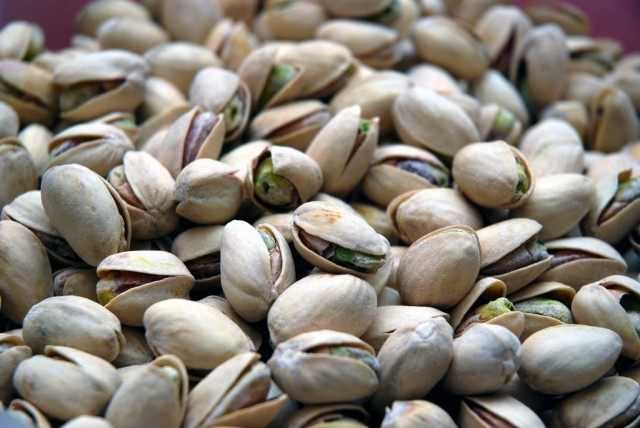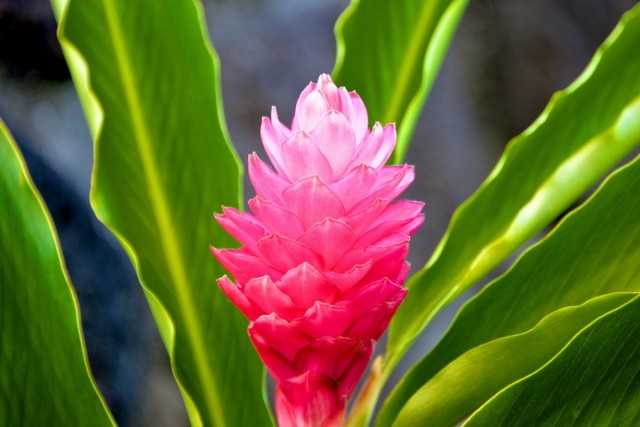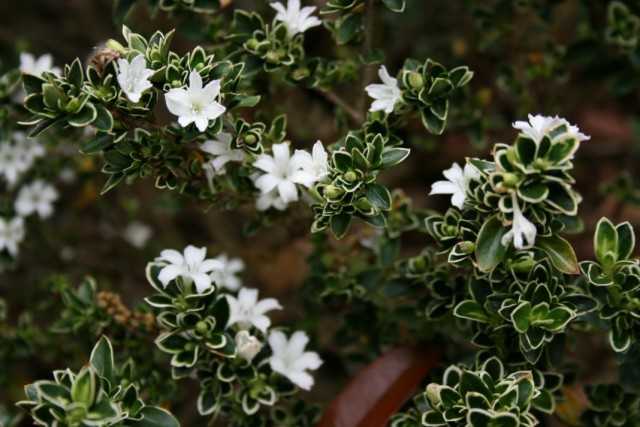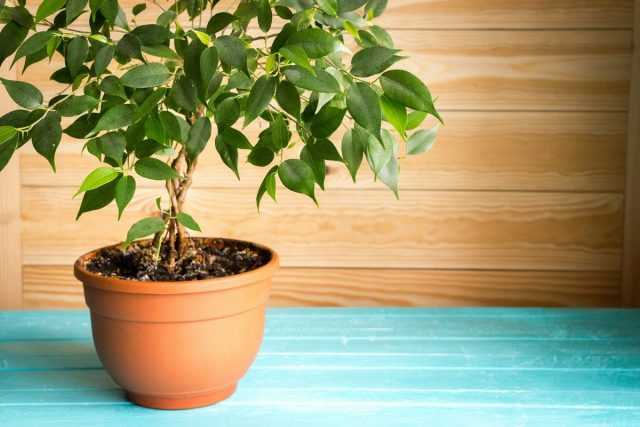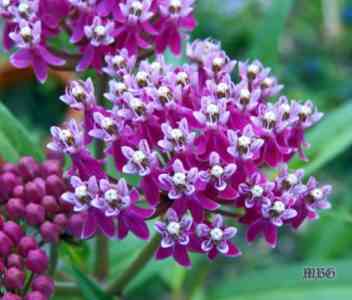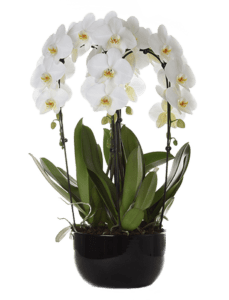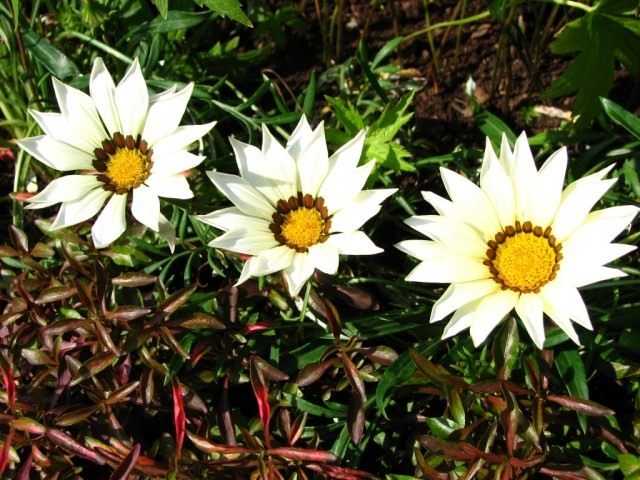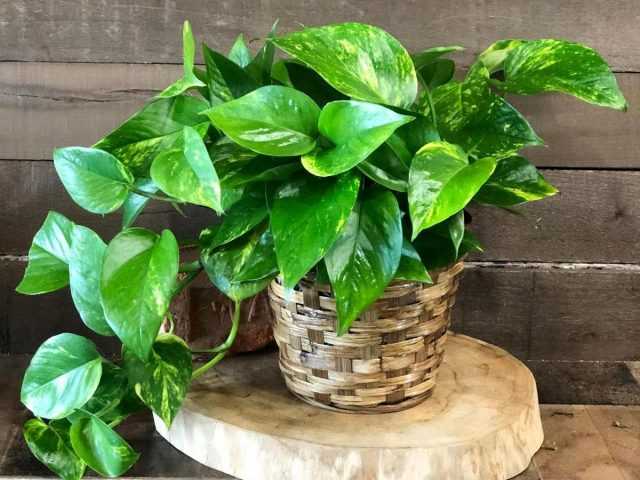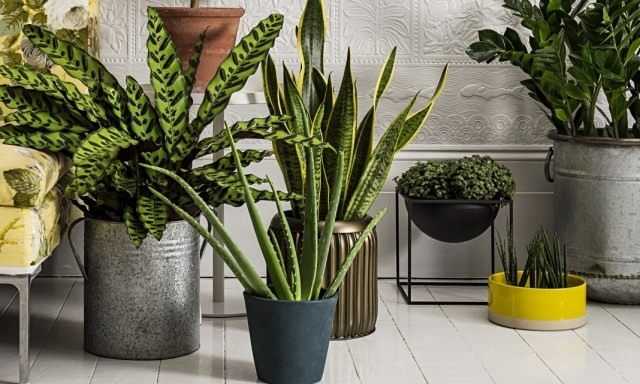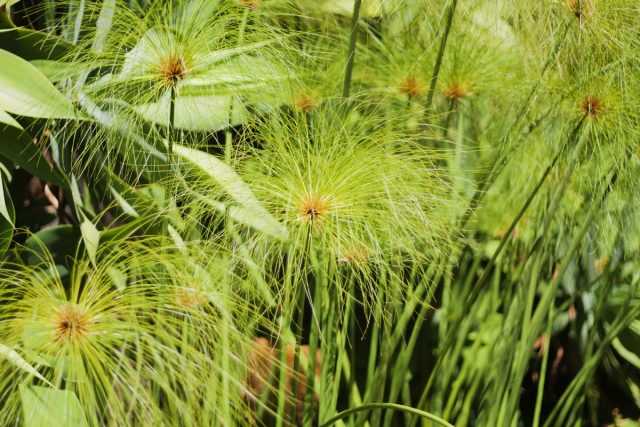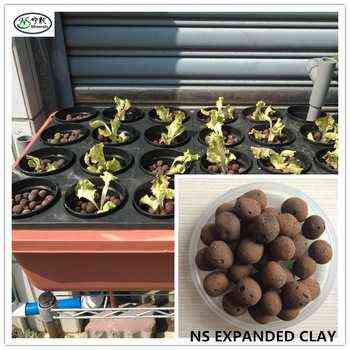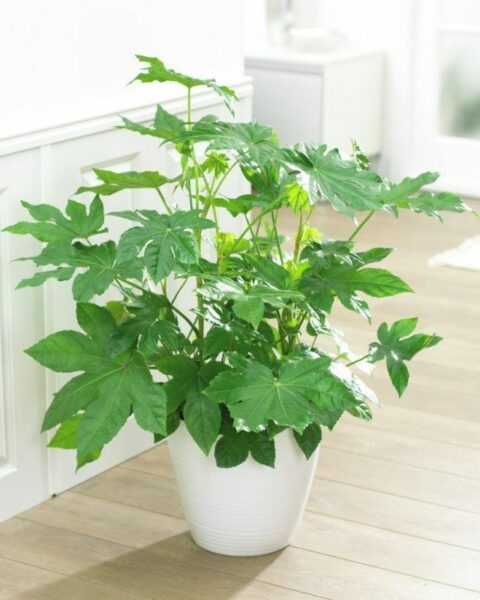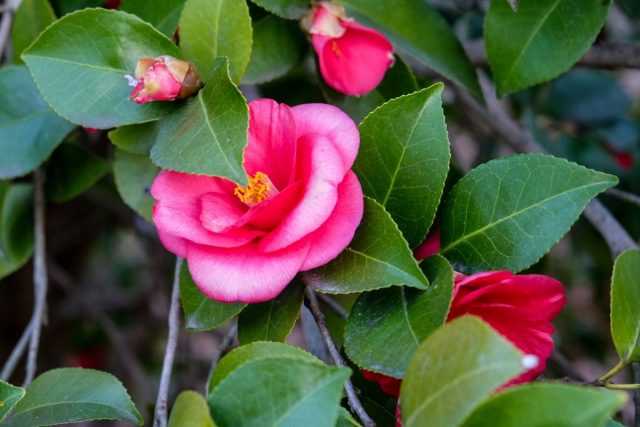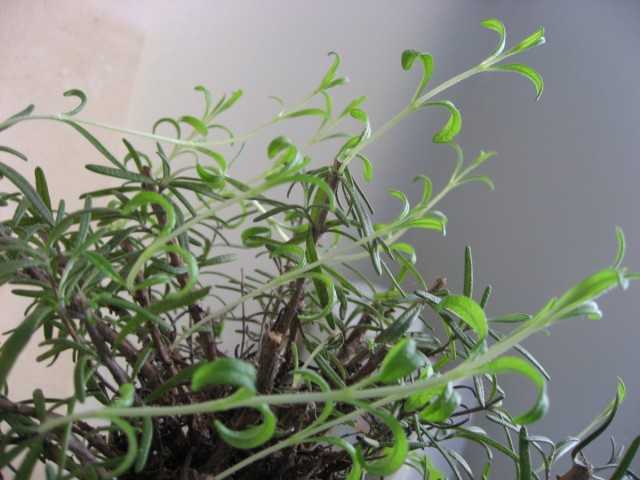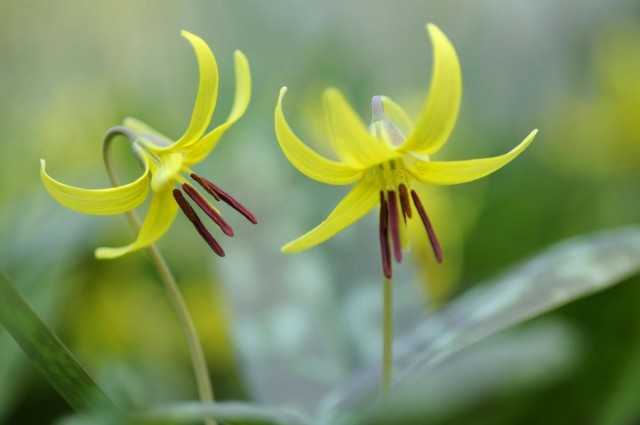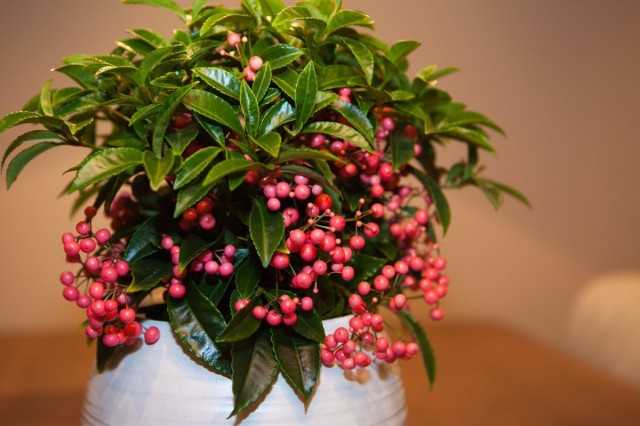Guzmania (Guzmania) is an exotic plant of the Bromeliad family, which in natural conditions adorns the tropical regions of South America. This flower is an epiphyte, therefore it grows more often on tree-like plants. But gusmania is not a parasite. It feeds on a substrate that consists mainly of bird droppings, dead bark and dead insects. In addition, gusmania is an annual plant, which is a complete surprise for many novice flower growers. The flower is very interesting and beautiful, it is happily grown at home. But when growing, it must be borne in mind that the air of the tropical forest is very humid, warm and well ventilated.
Guzman
The first plants of this genus were tall, but many modern varieties are only 25 cm high and 30 cm wide.Gusmania is distinguished by decorative glossy leaves and an erect, spike-shaped, bright inflorescence that grows directly from the middle of the rosette in the 3-4th year of life. Her flowering is colorful and unusual. Unattractive flowers bloom for only a few days, and the bracts (apical leaves of the rosette) retain their freshness and color for up to 17 weeks.
Many varieties of gusmania are known. Of these, the most popular is “Luna” with a mauve spike. Some varieties have yellow, red, purple or pink inflorescences. Instances with bright green foliage are more resistant than varieties with reddish leaves.
Secrets of caring for gusmania at home
After buying a gusmania, you do not need to rush to transplant it into a stationary pot. Let the plant remain for some time in the one in which it was purchased. If the flower is large, after a couple of weeks it will still have to be transplanted into a wider and shallower pot. A gusmania transplant should be carried out carefully, trying not to injure the delicate roots.
Gusmania is installed on a well-lit window sill shaded from the sun. On the sill of the southern orientation, the flowers will be brighter than the northern one. Direct sun is undesirable, as it can burn the leaves. It is advisable to keep the temperature for gusmania moderate throughout the year: in winter 16-18 ° C, in summer a little higher – 18-24 ° C. At a higher temperature, gusmania should be sprayed with settled warm water.
Pour gusmania into a leaf outlet, filling it 2-3 cm with soft rain water. The old water is drained and fresh water is poured every week. The soil in the pot is moistened only after it dries. Waterlogging is more dangerous for Gusmania than drought. In winter, when the temperature drops to 18 ° C, water is drained from the outlets, as it can cause leaves to rot.
The plant is fed monthly all year round with liquid fertilizer for bromeliads. The gusmania outlet is filled with the same solution, the substrate is moistened and the leaves are sprayed. In summer, salt is washed out of the pot twice.
The peculiarity of the flowering of gusmania is that after the bracts wilt, the plant dies, leaving small shoots at the base of the leaves, with which the flower further propagates. When the shoots grow to a height of 14 cm, they are separated from the plant with a sharp knife and transplanted into small (up to 15 cm in diameter) containers, wide and low.
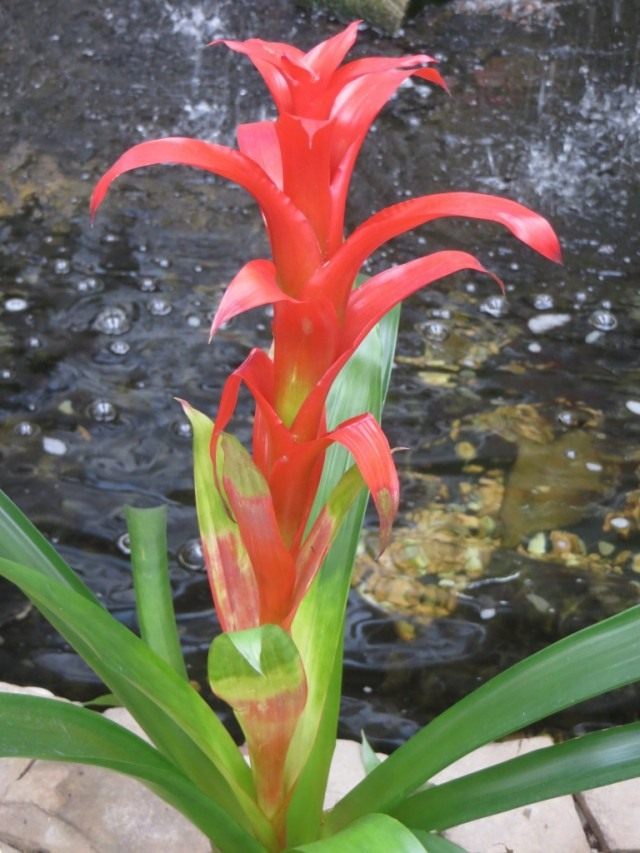
Before planting gusmania, the pot is half filled with drainage: (pebbles, expanded clay, pieces of broken dishes), which will protect the root system from waterlogging, which means from decay. Pour the prepared substrate from turf soil, sand, peat, humus on top (2: 1: 1: 1). For looseness, add chopped pieces of charcoal, needles and bark of conifers. The ideal soil mixture for gusmania is a store-bought soil for bromeliads or orchids.
It is better to transplant gusmania in the spring, while the substrate should not be strongly compacted. Depending on the conditions of keeping, new plants will bloom after 2-3 years. If the shoots are not separated from the mother plant, then the gusmania will bloom more magnificently, and reproduction will occur naturally.
Gusmania is transplanted annually, when the roots become cramped in a small pot. The capacity is taken a little large, but not too spacious. A small pot promotes rapid flowering.
Gusmania looks spectacular on a fancy snag, in a coconut shell or on a piece of bark from a balsa tree. The roots of the flower are wrapped in sphagnum moss, and then attached to the bark with wire. But when growing a flower in this way, you should take a more responsible approach to watering, since such soil dries up very quickly.
